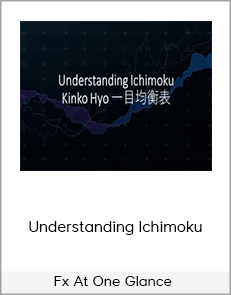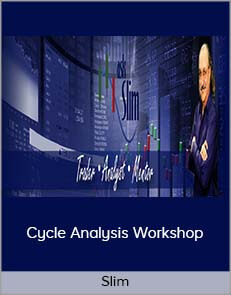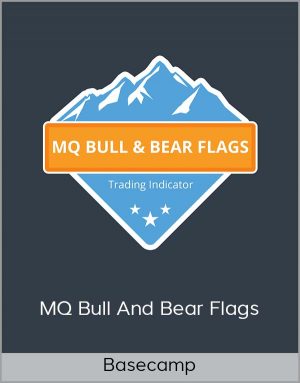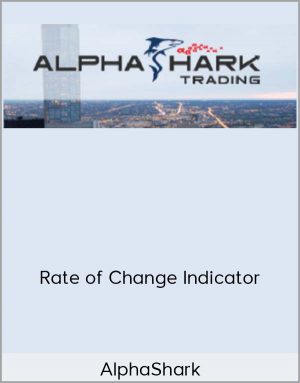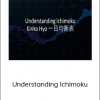Fx At One Glance – Understanding Ichimoku
$75.00$497.00 (-85%)
There are seven volumes by Ichimoku Yamato, and it is said that it is almost impossible to understand everything in theory.
Fx At One Glance – Understanding Ichimoku
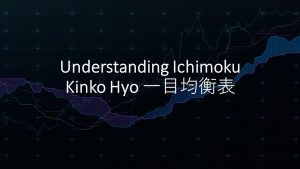
Check it out: Fx At One Glance – Understanding Ichimoku
The Ichimoku Cloud is a powerful three-dimensional charting system that shifts the time axis to the future and the past. Ichimoku comprehensively incorporates wave, time and level, and is a visual representation of the balance of the market price. This is a very profound technical analysis that focuses on time analysis and extends to wave analysis.
The indicator is used to display support and resistance levels, momentum, and trend direction all at one glance. It helps the trader determine the most suitable time to enter and exit the market by providing market bias and even entry signals. Ichimoku at first glance appears complicated for inexperienced traders to understand. However, once you dedicate yourself to learning the system, it will truly enhance your trading.
Ichimoku is purely a domestic technical analysis created by Mr. Yamato Ichimoku (Goichi Hosoda). Mr. Hosoda worked as a reporter for the newspaper “Toshi Shimbun” in the Miyako Shimbun. In 1936, he released Ichimoku under the name Ichimoku Sanjin. There are seven volumes by Ichimoku Yamato, and it is said that it is almost impossible to understand everything in theory.
In Japan, it is supported by overseas fund managers and is one of the most popular technical indicators among individual investors. The Ichimoku Equilibrium is composed of three theories: time theory, wave theory, and value observation theory, using five lines: Conversion Line, Reference Line, Leading Span A & B, and Lagging Span.
Ichimoku Equilibrium is based on the idea that “the market is the balance between where to buy and where to sell”, and that the market moves in the direction of disequilibrium. It is said that it is not “price” but “time” as the essential factor that moves the market. Therefore, the chart includes a temporal element. Below is a chart representing the Ichimoku Kinko Hyo.
The Five Lines
Tenkan Sen / Conversion line 転換線 – (green line) = (9 day high + 9 day low) ÷ 2 = midpoint
Kijun Sen / Reference line 基準線 – (blue line) = (Highest high for past 26 days + Lowest low for past 26 days) ÷ 2 = midpoint
Senkou Span A / Leading Span A 先行スパンA – (gray line) = (Conversion Line + Reference Line) ÷ 2 advanced 26 days into the future
Senkou Span B / Leading Span B 先行スパンB – (blue line) = (52 day high + 52 day low) ÷ 2 advanced 26 days into the future
Chikou Span / Lagging Span 遅行スパン = the closing price of the current day moved back 26 days
Tenkan Sen / Conversion Line 転換線
The Tenkan also known as the Conversion Line has the fastest response to price among the five Ichimoku lines and is the basis of analysis. As the name suggests, the conversion line represents the process of changing within the markets. This is where the market shows it’s initial turning point by crossing the Conversion Line. The Conversion Line displays short-term price movements and portrays market trends. The Conversion line makes it easier to grasp the current state of the market. The turning point of the market is represented by the average of the highest price for the past 9 days and the lowest price for the last 9 days. When these levels are violated, it shows this is where we can see the development of a trend and the increase of short term momentum. Since the number of periods calculated is smaller than that of the Kijun / Reference Line, the Conversion Line suggests a shorter-term price movement.
The Conversion Line also represents short term support and resistance. If the price is above the Conversion Line then the Conversion Line represents short-term support but if the price falls below the Conversion Line then the Conversion Line represents short-term resistance. This is why at times you will see price bounce off of the Conversion Line.
Kijun Sen / Reference Line 基準線
The Kijun also known as the Reference Line or Base Line is a line that draws the average or midpoint of the highest high and the lowest low of the past 26 days. The moving average is the average of the closing prices, but since the Reference Line is the average of the highest high and lowest low of the previous 26 periods, the slope of the Reference Line will remain flat unless the previous high or low of the past 26 periods is updated or changes. If the Reference Line is sideways, it means that the high and low prices have not changed for the past 26 days, and the market is judged to be ranging . If the Reference Line is angled upward, the current exchange rate is updating the high price for the past 26 days, so the market has a clear uptrend. Conversely, if the Reference Line is angled downward, the current exchange rate is updating the low price for the past 26 days, so the market price is a clear downtrend. A Moving Average forms a curved line, whereas the Reference Line becomes flat. This flattening of the Reference Line also represents strong support and resistance levels.
The Reference Line is important because it shows the bias of the market. If the Reference Line is angling upwards and price is above the Reference Line this represents a bullish bias. In addition, if the Reference Line is angling downwards and price is below the Reference Line then the market bias is bearish and you would be best served shorting the market.
Also, if the Reference Line is parallel, it is a range, and when the candlestick is above or below the reference line, it is judged as a so-called cross-border market that has moved up and down across the half price of the past 26 periods. In this respect, the Reference Line is seen as a trend line. It is the reference point when looking at the market price.
The Reference line represents market equilibrium. When price is at or near the Reference line, then the market is in equilibrium. The further price moves away from the Reference Line this represents disequilibrium. A market that is in equilibrium has an equal amount of buyers and sellers, but as there is an increase in buyers or sellers, this would cause the market to move further away from the Reference Line. Using this concept, you would not want to make a trading decision when the market is too far away from the Reference Line as this would indicate the market is overextended and there could be a correction looming.
The Reference Line and conversion line are used as a set. You don’t see it only with the Reference Line, and conversely, you don’t see it only with the Conversion Line. This is the basis of the basics.
When the Conversion Line breaks above the Reference Line this is known as a Bullish TK Cross or Golden Cross and represents a buy signal. Conversely, when the Conversion Line breaks below the Reference Line, this is known as a Bearish TK Cross or a Death Cross and represents a sell signal.
Senkou Span A & B / Leading Span A & B
The shaded area between Leading Span A and Leading Span B is known as the Kumo Cloud 雲 and this area is also a support and resistance zone. The only lines shifted into the future are the Leading Spans A & B.
It is possible to check the trend of the market simply by looking at the position of the Kumo and the price.
1) If price is above the Kumo it is judged to be bullish and if it is below, it is judged to be bearish.
2) If price is above the Kumo then the Kumo represents support.
3) If price is below the Kumo then the Kumo represents resistance.
4) To judge the bias of the market it requires a daily candle breakthrough. The thinner the Kumo the easier the market can violate the support and resistance of the Kumo, but a thicker Kumo represents strong support and resistance and is, therefore, harder for the market to violate.
5) Where the Leading Span A & B intersect each other, this is called a Kumo Twist and there is likely to be a market turning point (trend change or acceleration). When Leading Span A crosses above Leading Span B, this represents a bullish sign and shows bullish strength. If Leading Span A crosses below Leading Span B, this represents a bearish sign and shows bearish strength.
What exactly does the Leading Span A represent? If the Conversion Line represents the short-term (9 days) market level (= center) and the Reference Line represents the mid-term (26 days) market level (= center), the Leading Span A is the short- to medium-term market level ( = Center). Based on Ichimoku, short term is 17.5 days. It represents the market level in the short and medium-term, and the trend in the short and medium-term represents Leading Span A. Once again I am referring to time which Ichimoku is based on and not the price.
Leading Span B represents the current long-term (52 days) market level with the price after 26 days. Leading Span A compares the current market level in the short and medium-term with the price after 26 days and tries to read how the trend in the short and medium-term has changed. Leading Span B compares the current market level in the long-term with price after 52 days and represents how the trend in the long term has changed.
Chikou Span / Lagging Span 遅行スパン
The Chikou Span aka Lagging Span is said to be the most important but simplest of the five Ichimoku lines. The formula for calculating the lagging span is the closing price shifted 26 days into the past. So 26 candles backward from the current candle but at the same level as the current candle.
When the Lagging Span is above the price candles this represents dominant buying has occurred, and when the Lagging Span is below the price candles this represents dominant selling has occurred. Therefore, it leads to one of the famous buy/selling signals in the Ichimoku Equilibrium Table, “Upturn / Reversal of Lagging Span”. When the Lagging Span exceeds the price line (the candlestick), it is called “the improvement of the Lagging Span” and a buy signal. When the Lagging Span falls below the price line it is called “reversal of the Lagging Span” and a sell signal.
The Lagging Span is also a confirmation span! The Lagging Span confirms the long or short entry based on whether the Lagging Span is above or below price. If you were to open a long trade and the Lagging Span was above the candles then this would confirm your long entry. Conversely, if you were to open a Long trade but the Lagging Span was below the candles then this would signal no trade because the Lagging Span is still showing selling is dominant.

